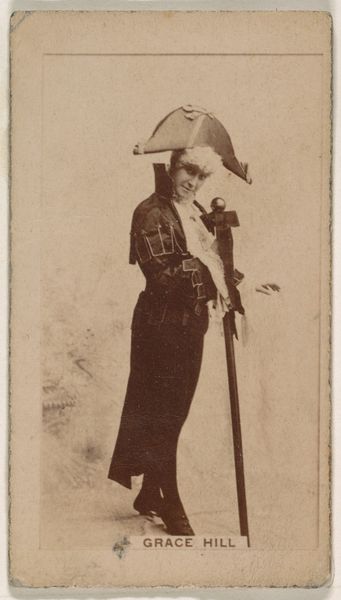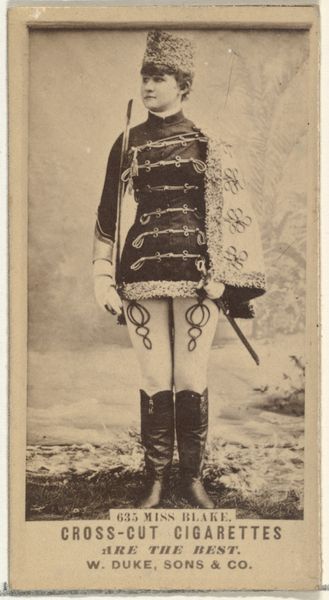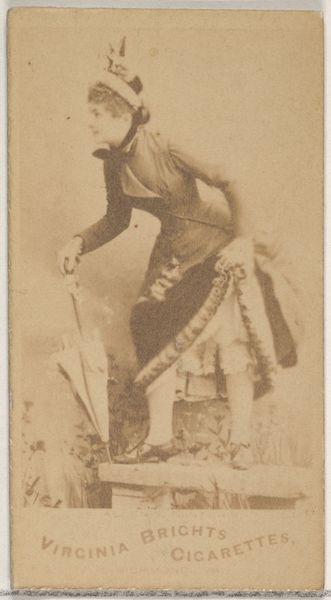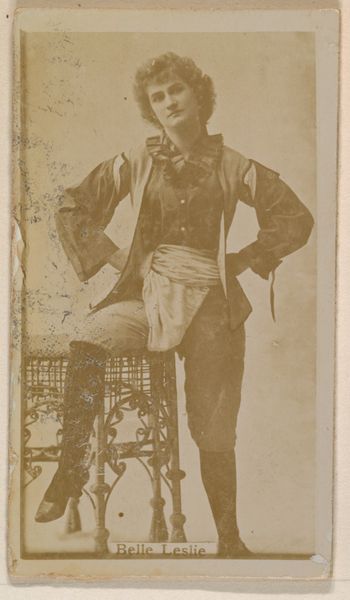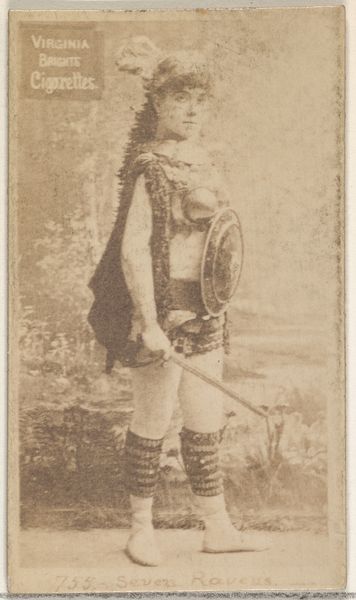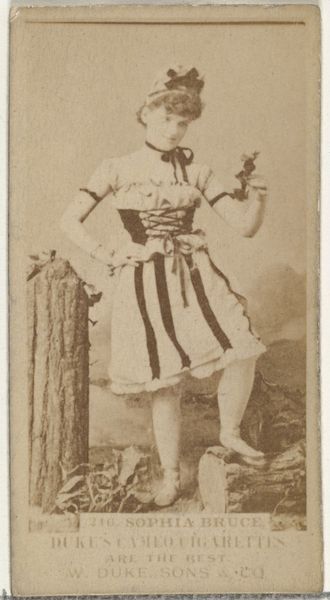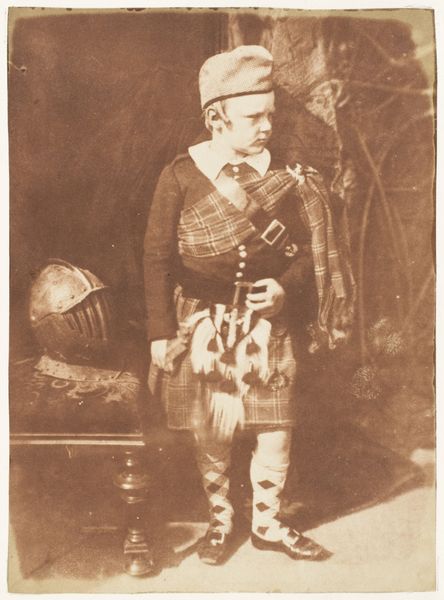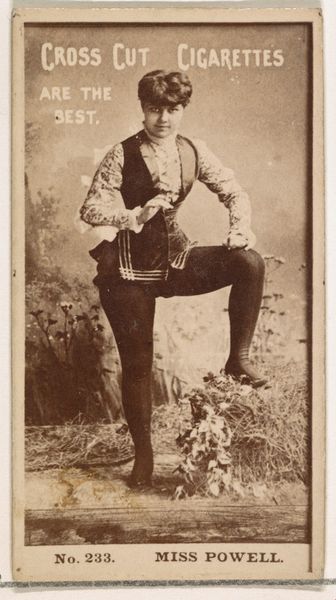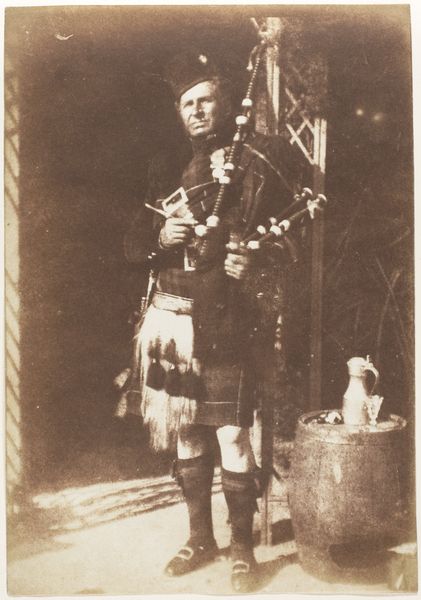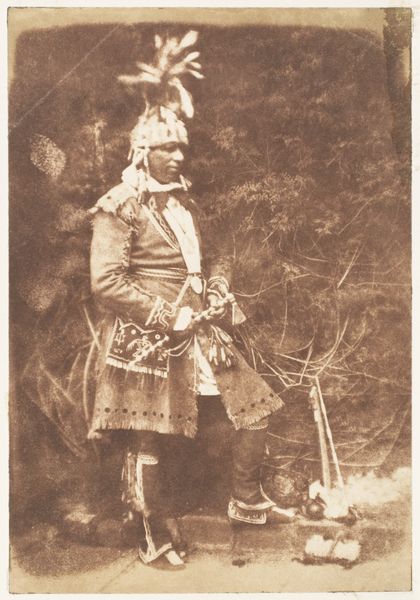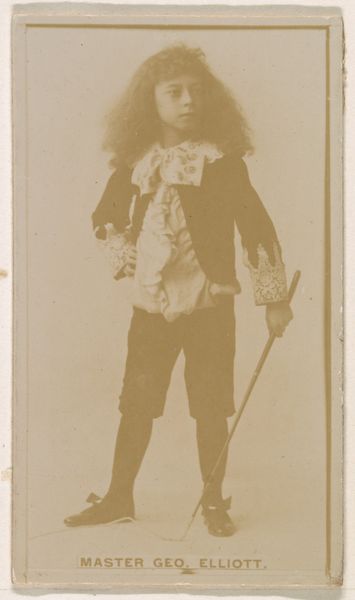![[Charles Edward Stuart, also known as Charles Manning Allan] by Hill and Adamson](/_next/image?url=https%3A%2F%2Fd2w8kbdekdi1gv.cloudfront.net%2FeyJidWNrZXQiOiAiYXJ0ZXJhLWltYWdlcy1idWNrZXQiLCAia2V5IjogImFydHdvcmtzLzkzZTVhNGEzLTE5N2MtNGJkYy05MDFmLTkwNGExNDdhZGY2OS85M2U1YTRhMy0xOTdjLTRiZGMtOTAxZi05MDRhMTQ3YWRmNjlfZnVsbC5qcGciLCAiZWRpdHMiOiB7InJlc2l6ZSI6IHsid2lkdGgiOiAxOTIwLCAiaGVpZ2h0IjogMTkyMCwgImZpdCI6ICJpbnNpZGUifX19&w=3840&q=75)
[Charles Edward Stuart, also known as Charles Manning Allan] 1843 - 1847
0:00
0:00
#
portrait
#
wedding photograph
#
photo restoration
#
pencil sketch
#
charcoal drawing
#
charcoal art
#
portrait reference
#
pencil drawing
#
limited contrast and shading
#
men
#
portrait drawing
#
celebrity portrait
Copyright: Public Domain
Curator: Here we have a captivating portrait, a calotype from the 1840s by the pioneering Scottish duo, Hill and Adamson. The sitter is believed to be Charles Edward Stuart, also known as Charles Manning Allan. Editor: Immediately, I am struck by the somewhat theatrical pose. The soft, hazy quality gives it such an ephemeral feel, almost as though the subject is a figure from a dream or a quickly fading memory. Curator: It’s interesting that you note the theatricality. Hill and Adamson were indeed experimenting with how to create a captivating image within the technical limitations of early photography. Editor: How so? What constraints were they facing, and how did those limitations maybe inadvertently speak to cultural ideas? Curator: Well, exposure times were considerably long. Sitters had to remain still for extended periods. This led to more formal, staged compositions, consciously or unconsciously mimicking portrait painting conventions. They were acutely aware of representing social class, too. He stands, commanding presence and draped in Highland regalia. Editor: Exactly. And there is something very self-conscious in that presentation, you know? The kilt, the sporran, the feathered bonnet. It’s a deliberate performance of Scottish identity. Do we know what kind of commentary on the act of performative national identity we can glean? Curator: The romanticism of the Highlands was pervasive then. After the Jacobite uprisings, there was a sort of fascination, even an idealization, of Highland culture. Tartan became a symbol of Scottish identity but one carefully curated and performed, especially for the upper classes. It makes you consider the way people performed race and class and gender through adornment. Editor: Right. What is being included, what is excluded, and why. Also, the fact that photography was such a new and groundbreaking technology, it further underscores that this portrait is also performing what is thought of a representation itself. Curator: Indeed, a very fair assessment. Hill and Adamson were pioneering artists, actively shaping photography's role in how society perceives itself, so in reflecting on what you have so aptly observed, maybe we are glimpsing this very process of definition and cultural placement at work. Editor: It’s like we are staring at not only a portrait but a reflection on representation itself.
Comments
No comments
Be the first to comment and join the conversation on the ultimate creative platform.

